巧手匠心,弥合历史缝隙
 作者
作者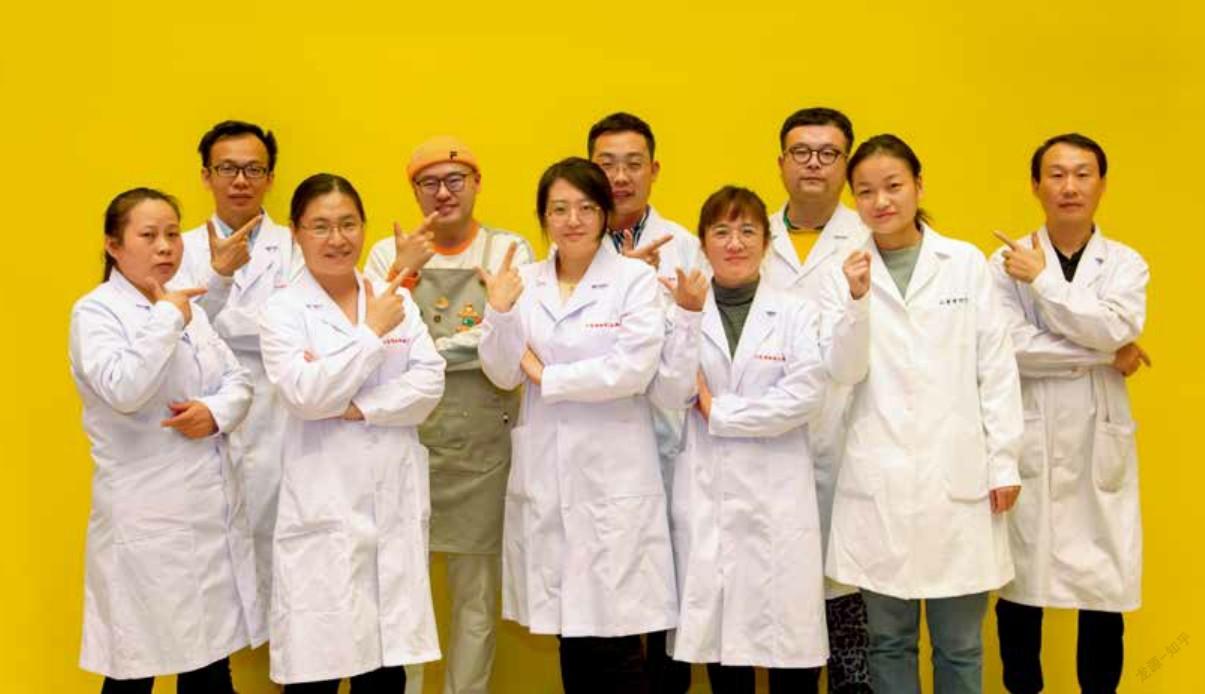
对于文物修复师,人们总是充满好奇。在大多数人的印象里,他们是藏于「深宫大院」的老者,远离大众的日常生活,充满神秘感。其实,这群身怀绝技的人,离我们并不遥远,也并不老迈。
从山东博物馆的北门进入,行至四楼的文物保护修复实验室,一群「80 后」文物修复师正用技艺弥合历史的缝隙,让沉睡千百年的文物渐次苏醒,重获「新生」。他们虽分工不同,但都对文物的保护修复持有一份热爱。
任伟是山东博物馆一名青铜器修复师,入行 9 年来,他参与修复的文物有 1000 余件。青铜器是金属器类藏品之一,它们由于长期埋藏在地下,与土壤中的水分、氧气、各类盐类发生缓慢的化学反应,表面形成各类铜锈。据任伟介绍,青铜器上的「锈」有好坏之分,并不需要都去除。文物修得好看不是目的,如何分辨这些「锈」,进而最大程度地保护文物才是宗旨。
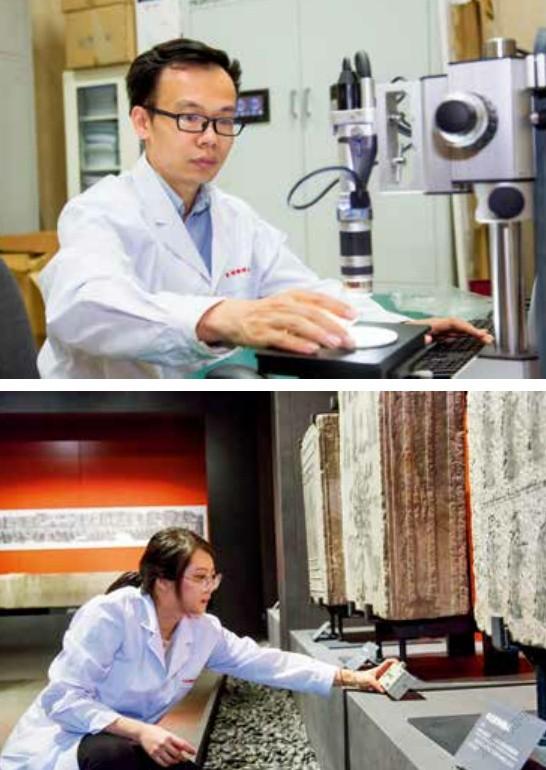
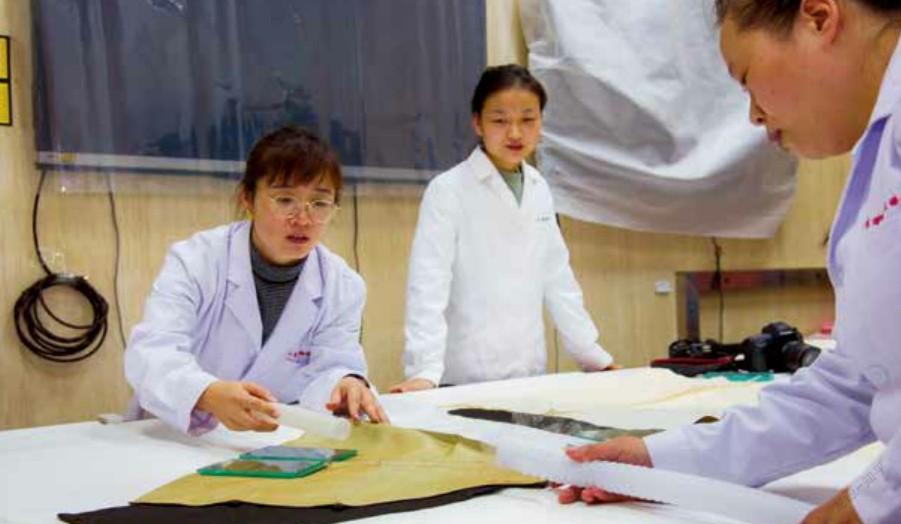
如青铜器怕湿一样,纸张怕干、彩绘怕光照……每一种文物都有自身适宜的保存环境。文物保护,预防为先。稳定、适宜的环境指标能够显着减缓文物的老化速度,减少病害的发生。现在大家普遍认同环境对文物的重要性,预防性保护意识有很大提高。
走进李晶所在的实验室,山东博物馆各个展厅的温湿度、二氧化碳、二氧化硫、光照度、挥发性有机化合物等各项数据,在环境监测平台上实时跳动。从微环境到小环境,从大环境到室外环境,覆盖全馆的 230 个传感器,连接着一台黑色的数据库应用控制器,有任何异常,李晶都会在第一时间知道。
同时,伴随着科技的进步,各种光谱及显微技术应用于文物信息提取、组成成分及病害成因分析等方面,让文物修复变得更加精准高效。作为文化传承保护的重要方式,文物修复是一场穿越千年的对话,文物修复师在对话中敬畏,修复技艺在对话中传承。
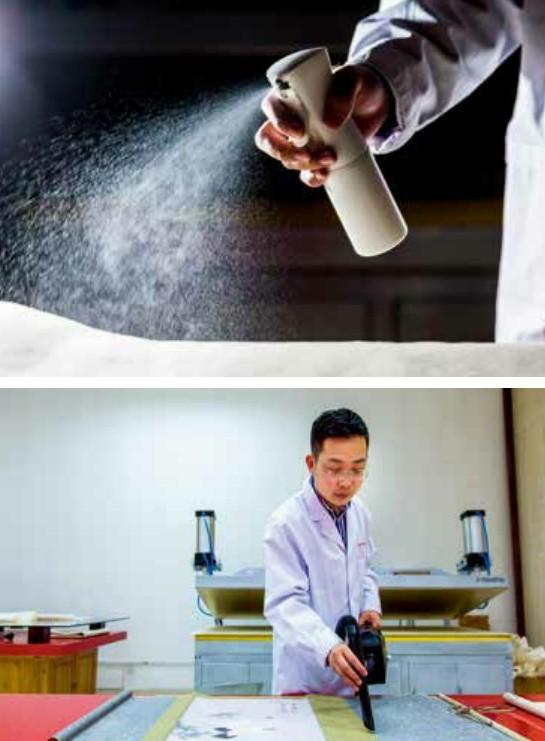
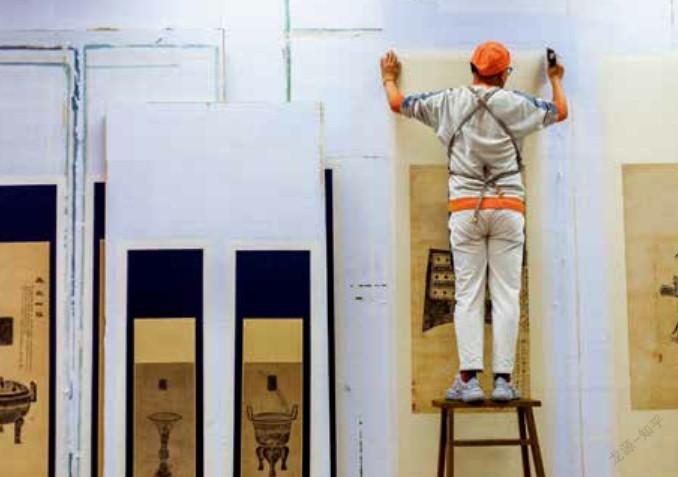
Bridging Historical Gap with Ingenuity
Entering from the north gate of the Shandong Museum, walking into the Laboratory of Cultural Heritage Conservation and Restoration on the fourth floor, you will see a group of“Post-80s” heritage restorers using their techniques to bridge the gap of history, to awaken those cultural relics sunk in sleep for thousands of years, and to make them come to life again. Assigned to different posts, they maintain a passion for heritage conservation and restoration.
Ren Wei is responsible for restoring the metal ware in the museum. Engaged in the profession for nine years, he has participated in the restoration of more than 1,000 cultural relics. In his view, the goal is not to restore cultural relics beautifully, but to identify “Rusts” and protect cultural relics to the maximum extent.
With the development of society and the progress of science and technology, more new elements have been integrated into traditional heritage restoration, which has gradually become part of the concept of “Heritage Conservation”. Now, the importance of the environment to cultural heritage has been widely recognized, the awareness of preventive conservation has been greatly improved.
In restorer Li Jing’s laboratory, all data of each exhibition hall, including temperature, humidity, carbon dioxide, sulfur dioxide, luminance, and volatile organic compounds, is flashed on the environmental monitoring platform in real time. From the microenvironment to the small environment, from the big environment to the outdoor environment, 230 sensors covering the entire museum are connected to a black database application controller, which will immediately inform Li Jing of any abnormality.
Meanwhile, with the progress of science and technology, and the application of various spectroscopic and microscopic techniques to heritage information extraction, composition and disease cause analysis, and so forth, heritage restoration has become more accurate and efficient. As an important way of cultural inheritance and conservation, heritage restoration is a dialogue across millennia. In the dialogue, heritage restorers hold heritage in awe, and pass on restoration techniques.

作者 刁艳杰